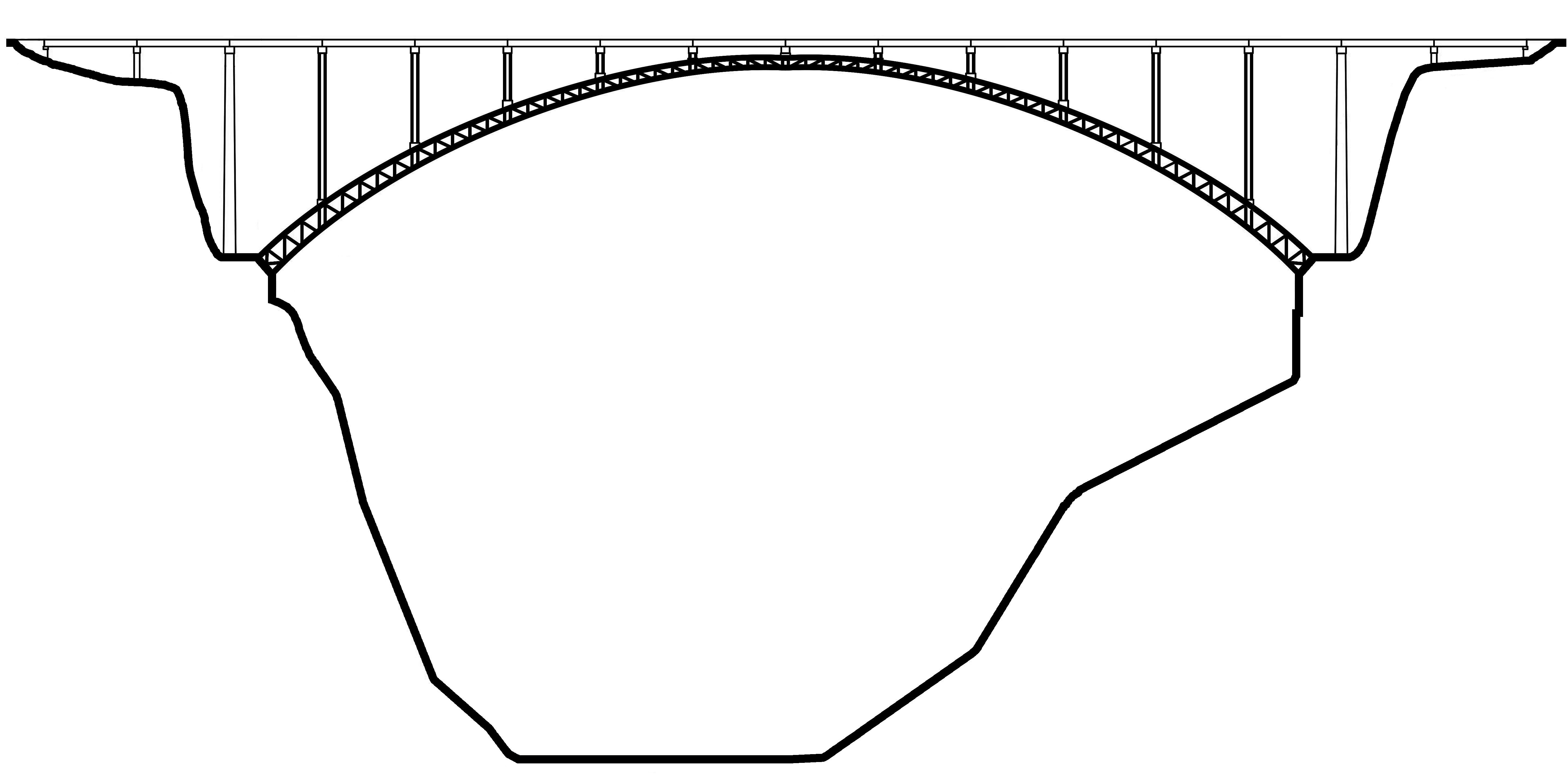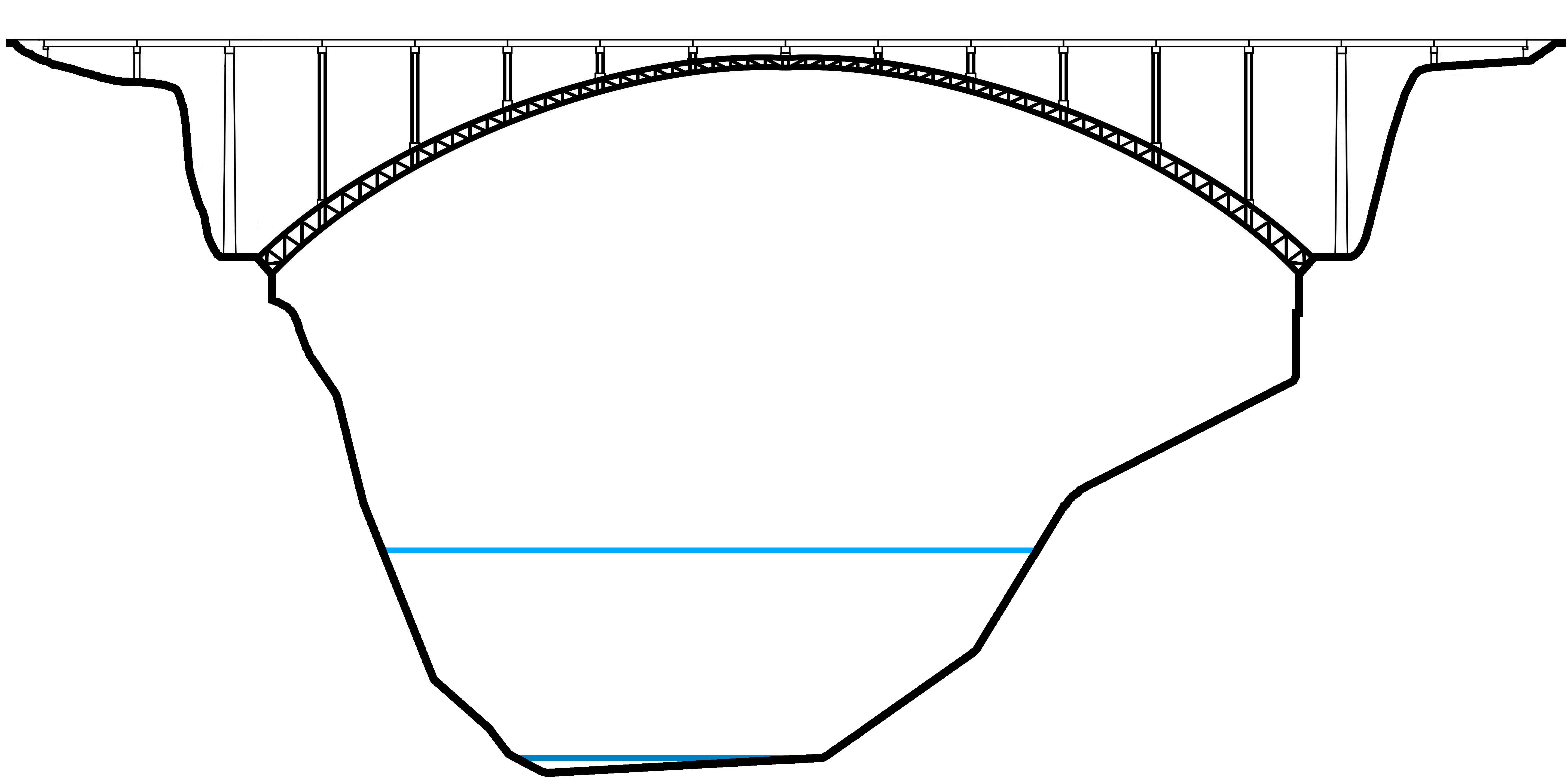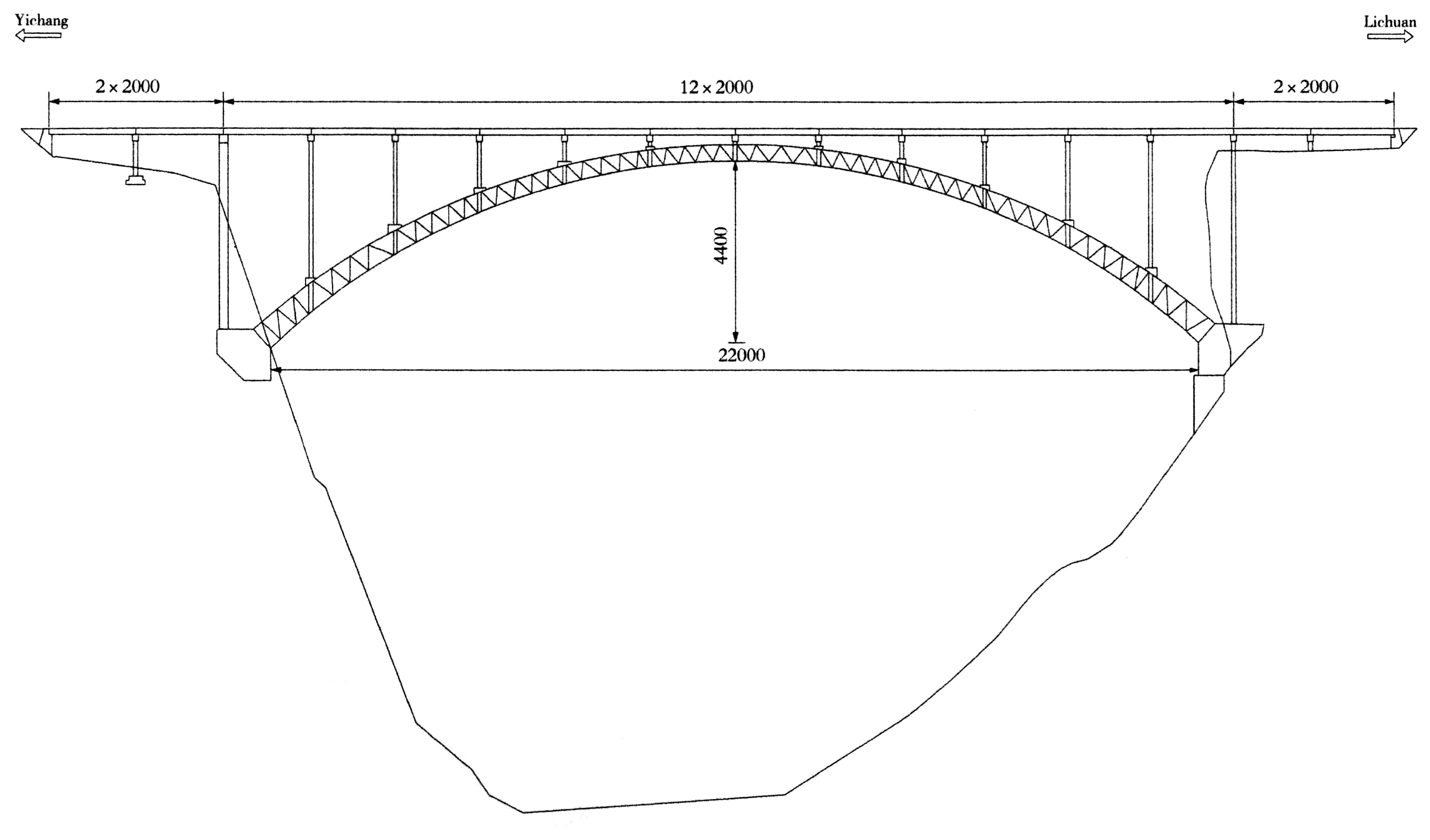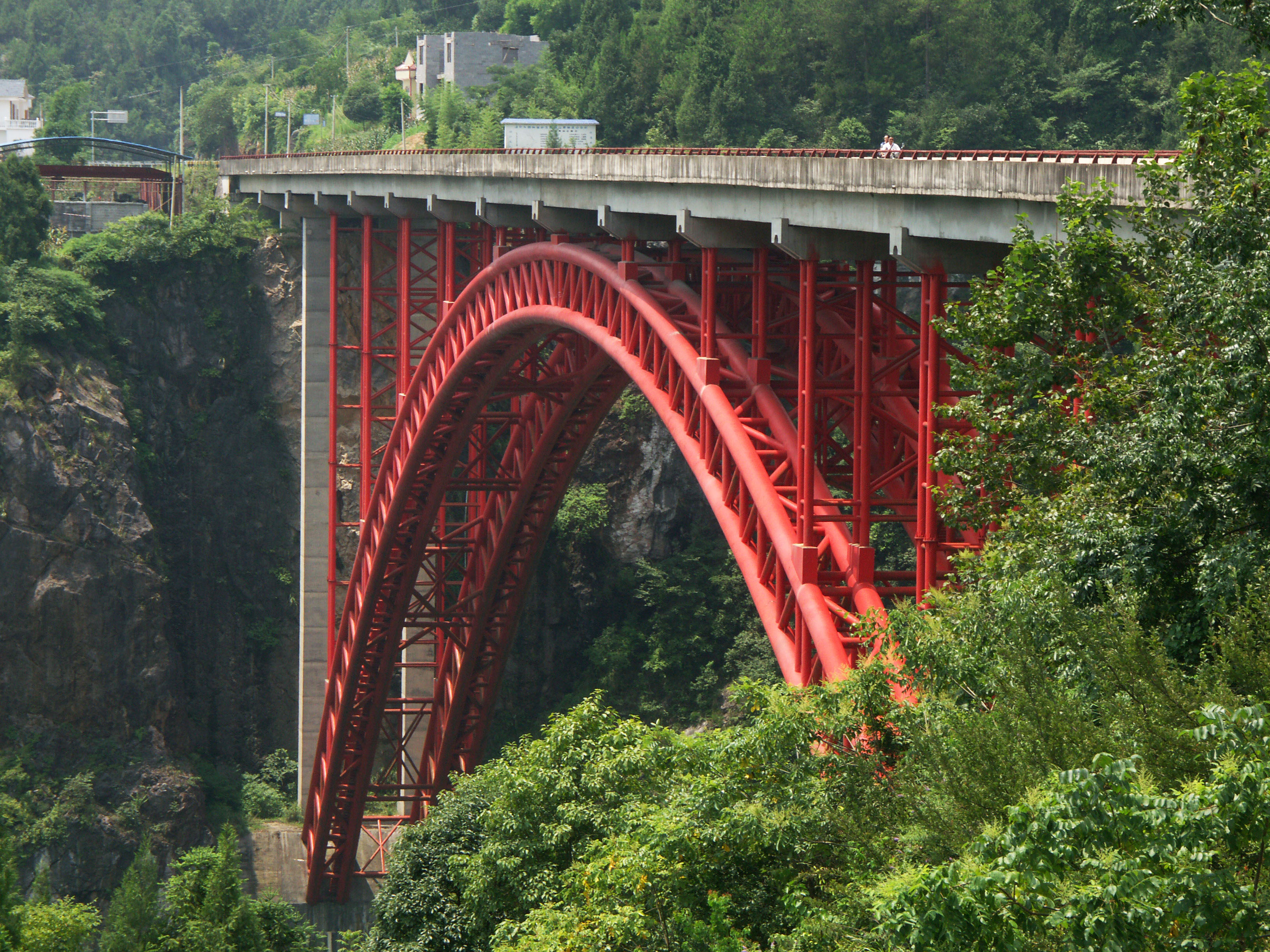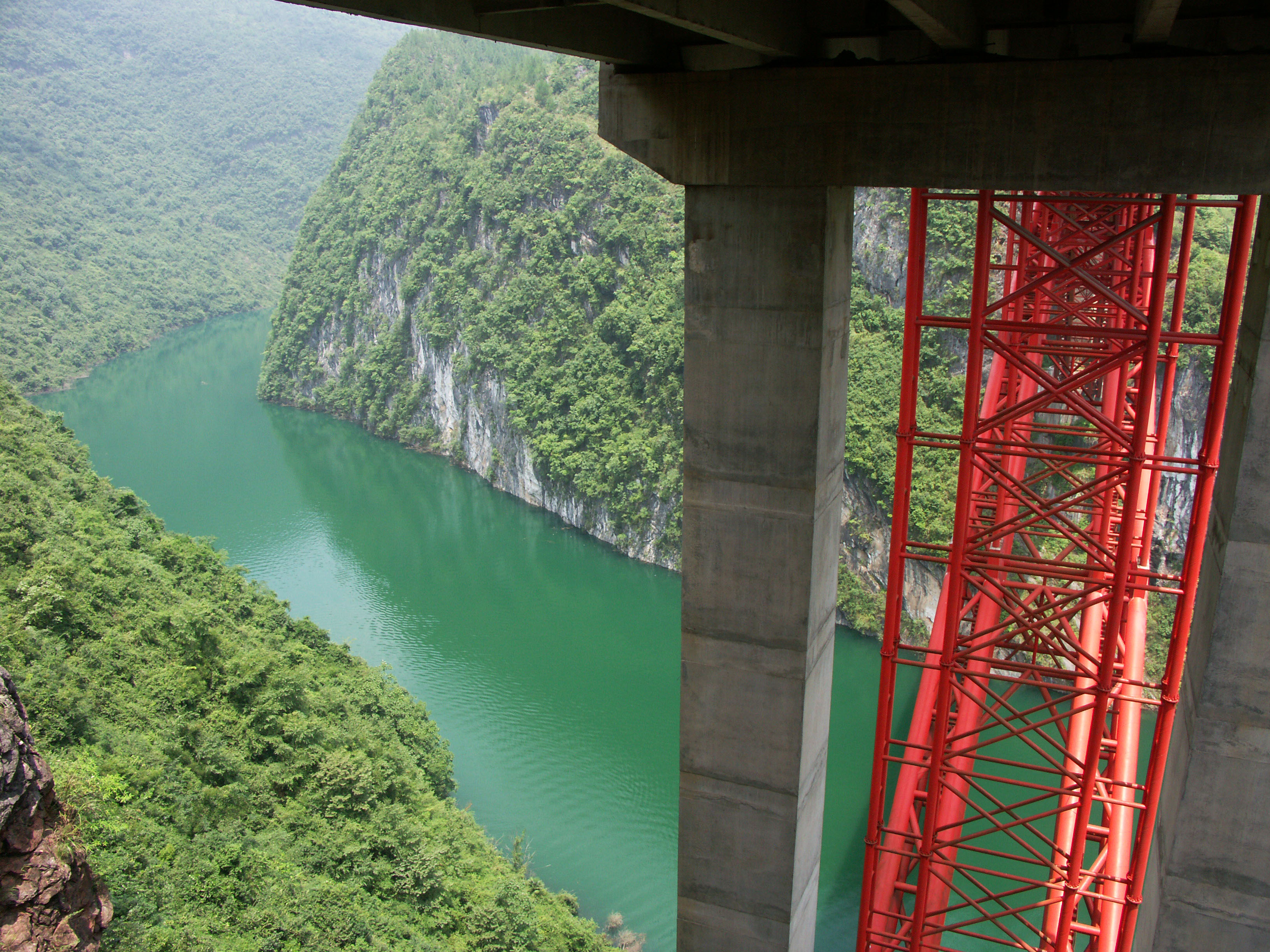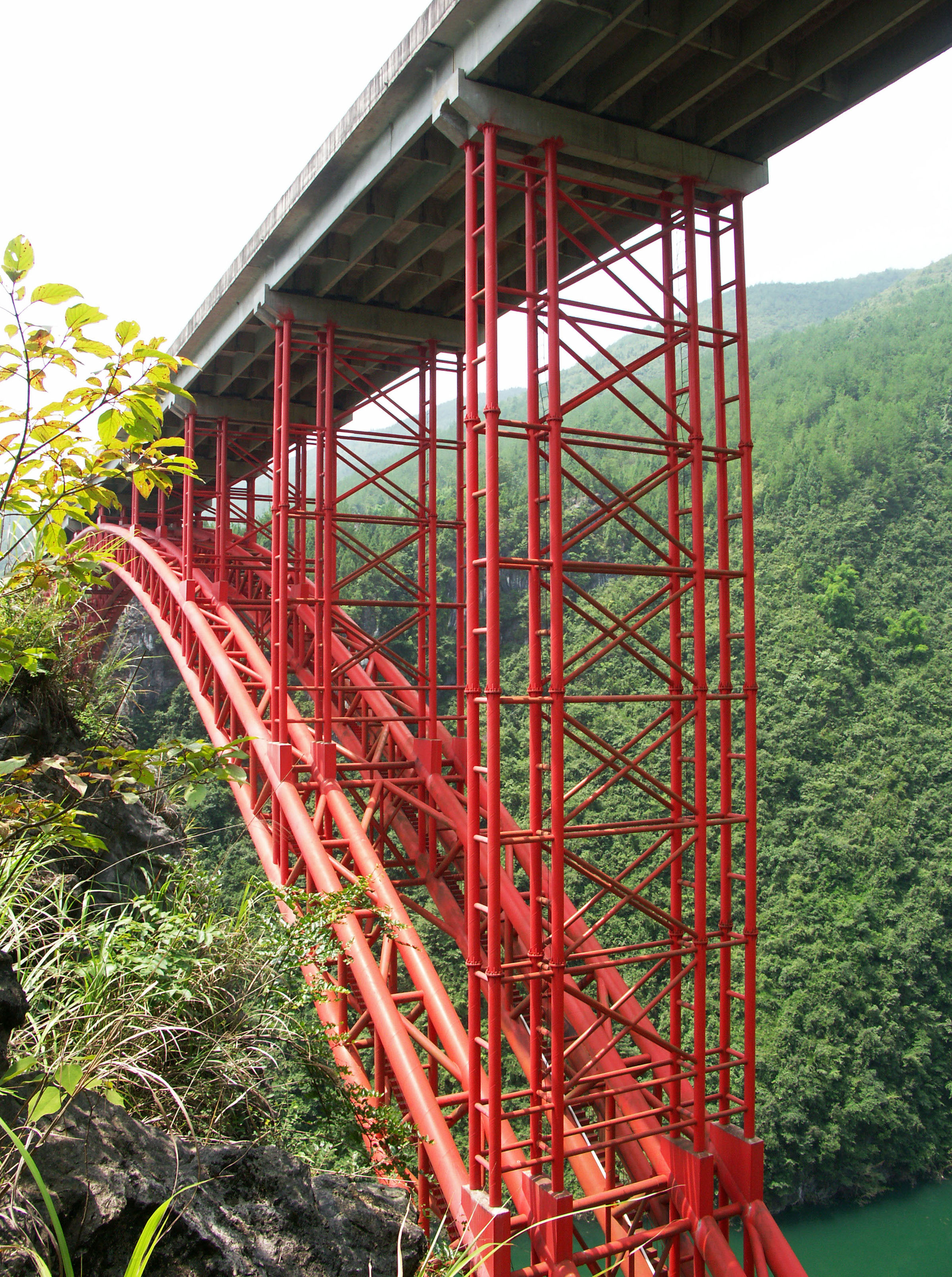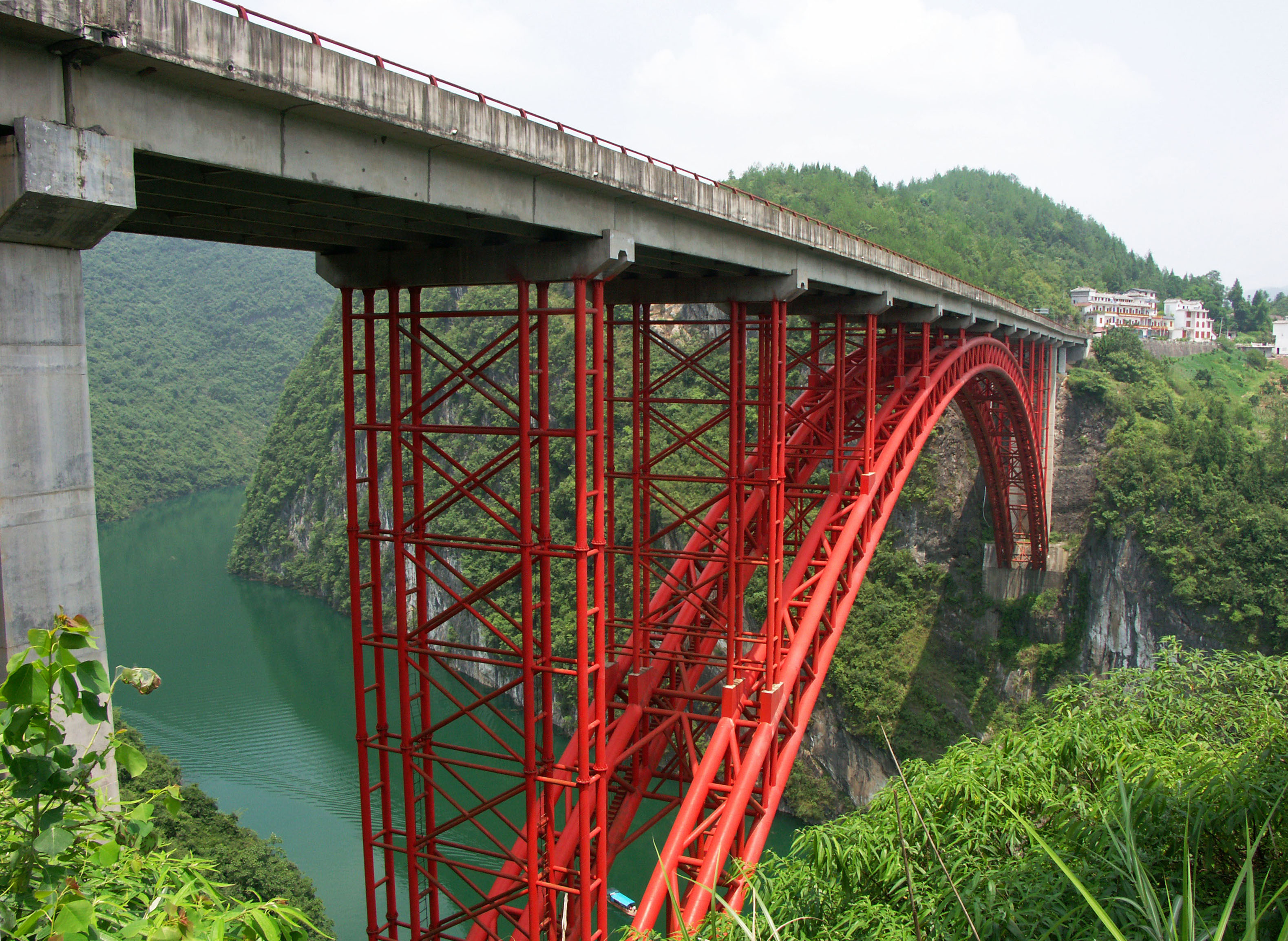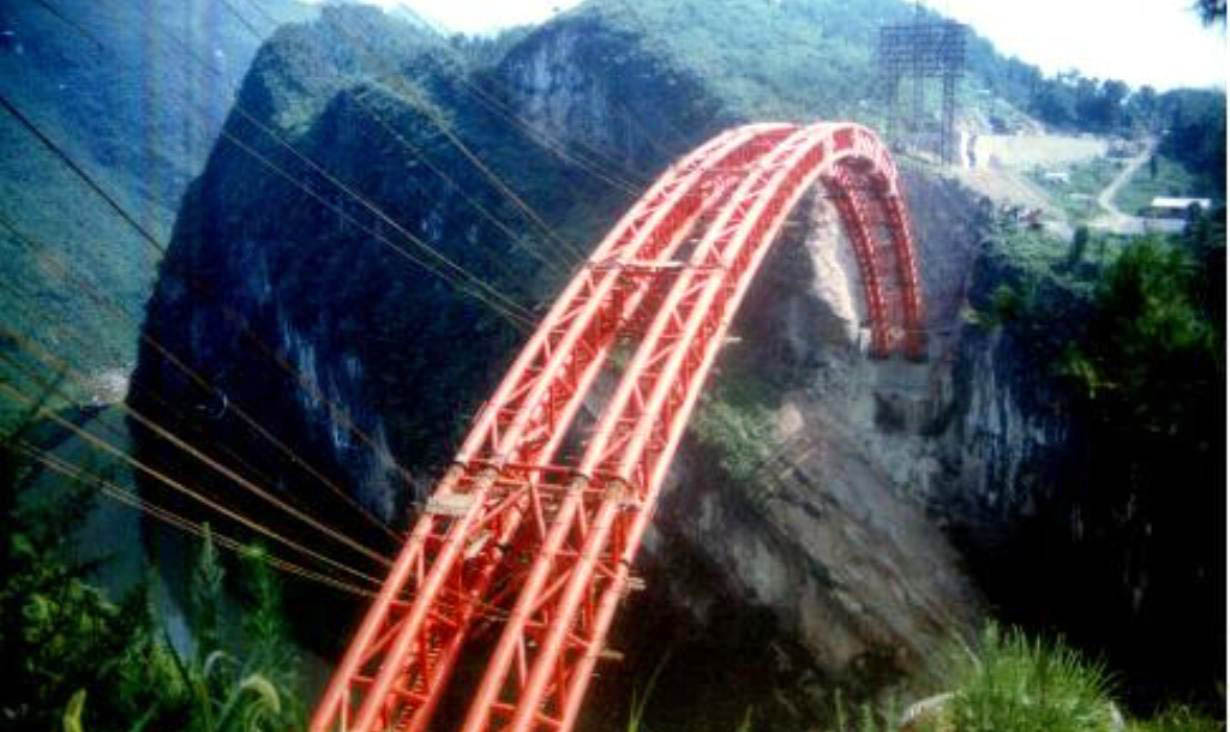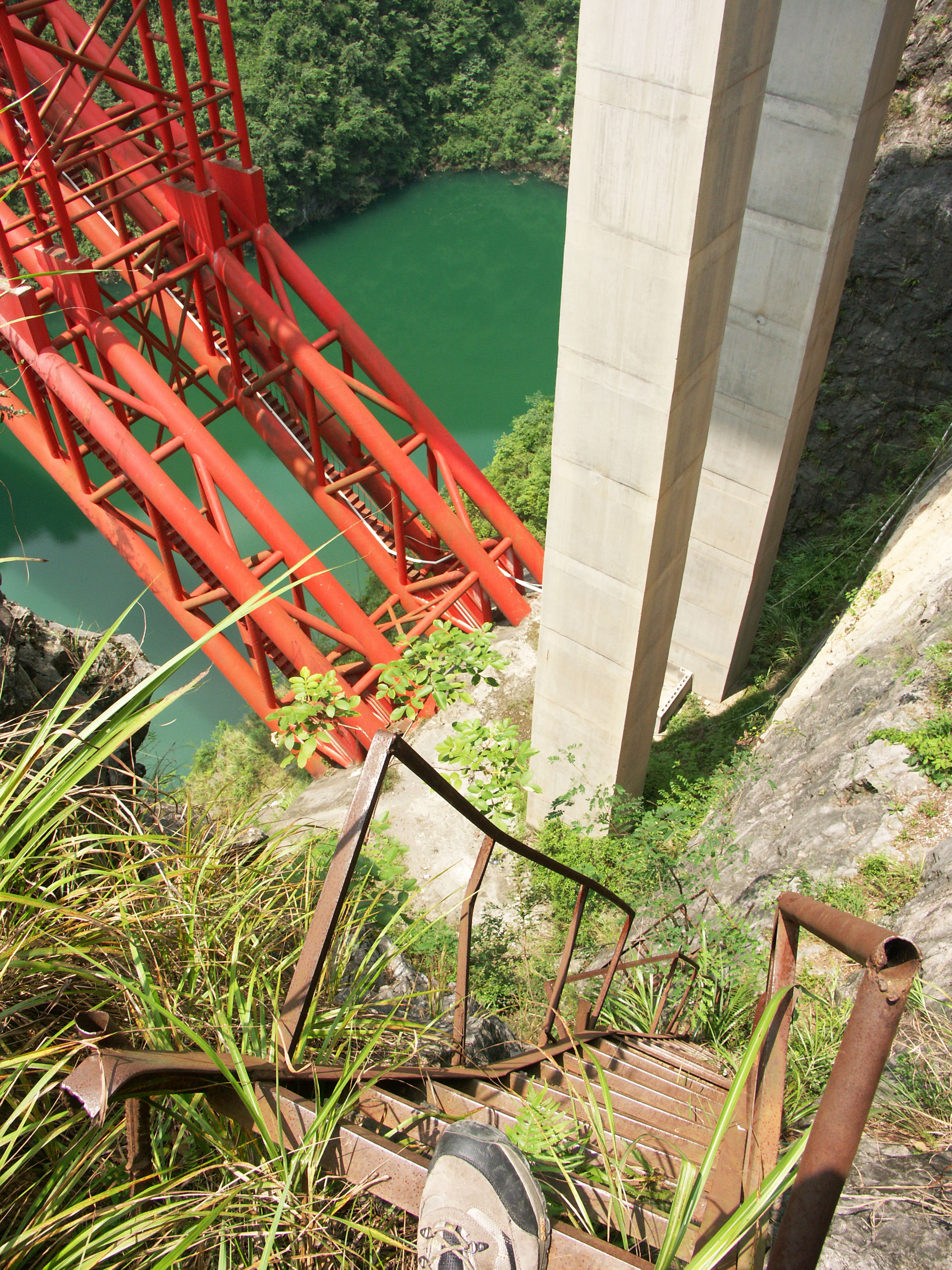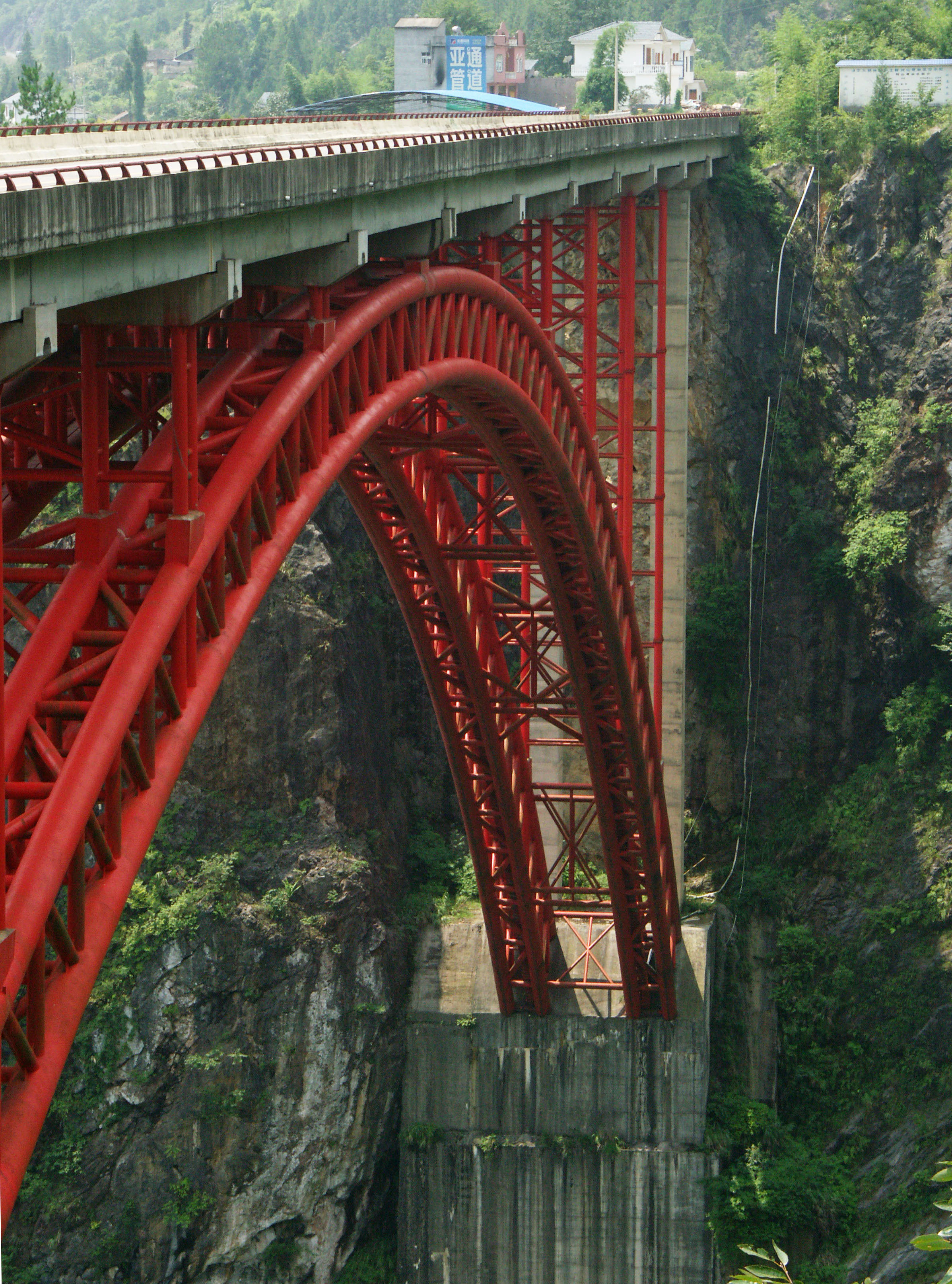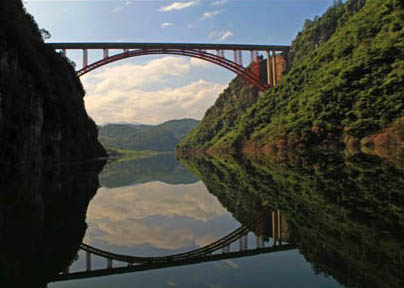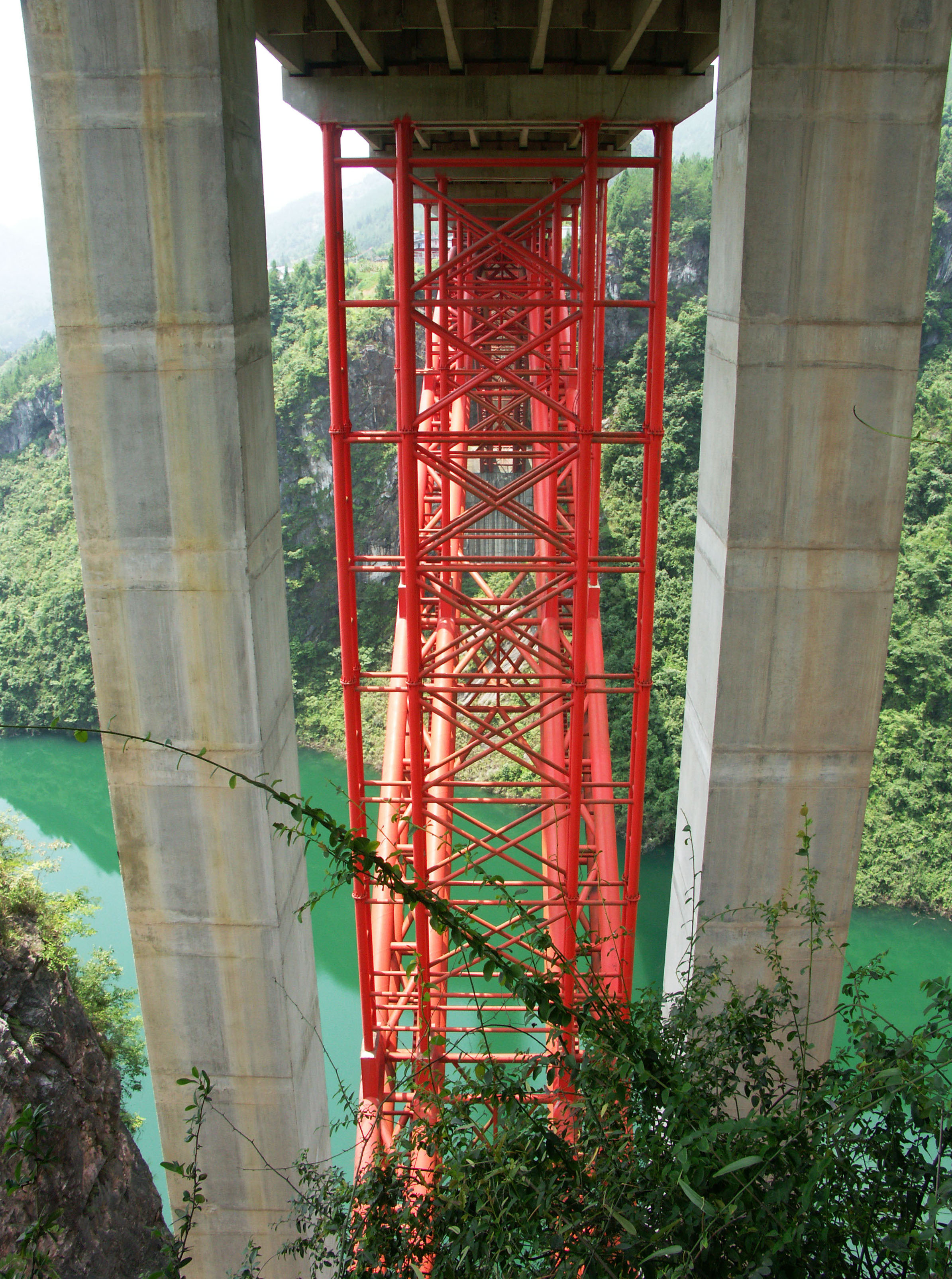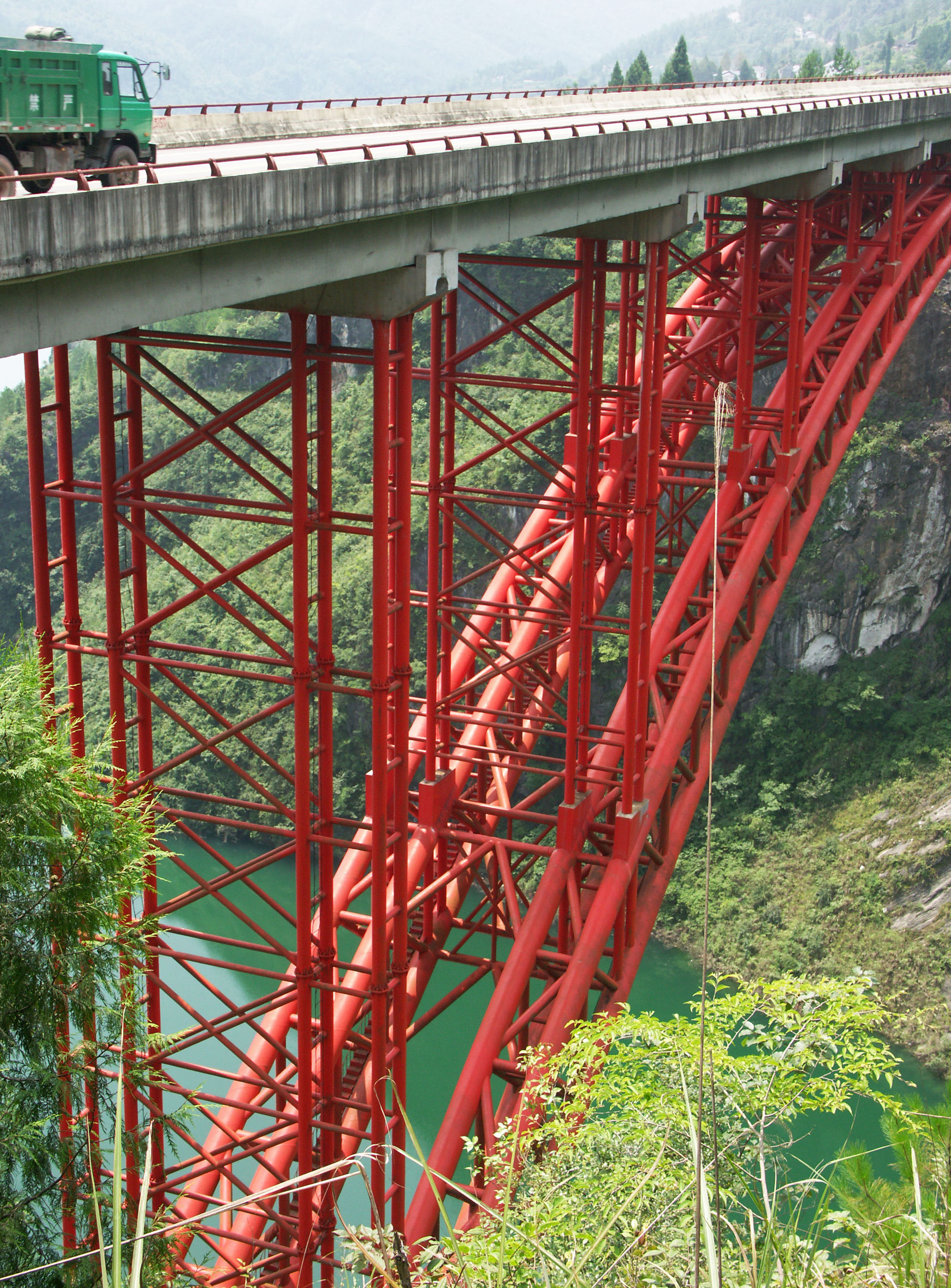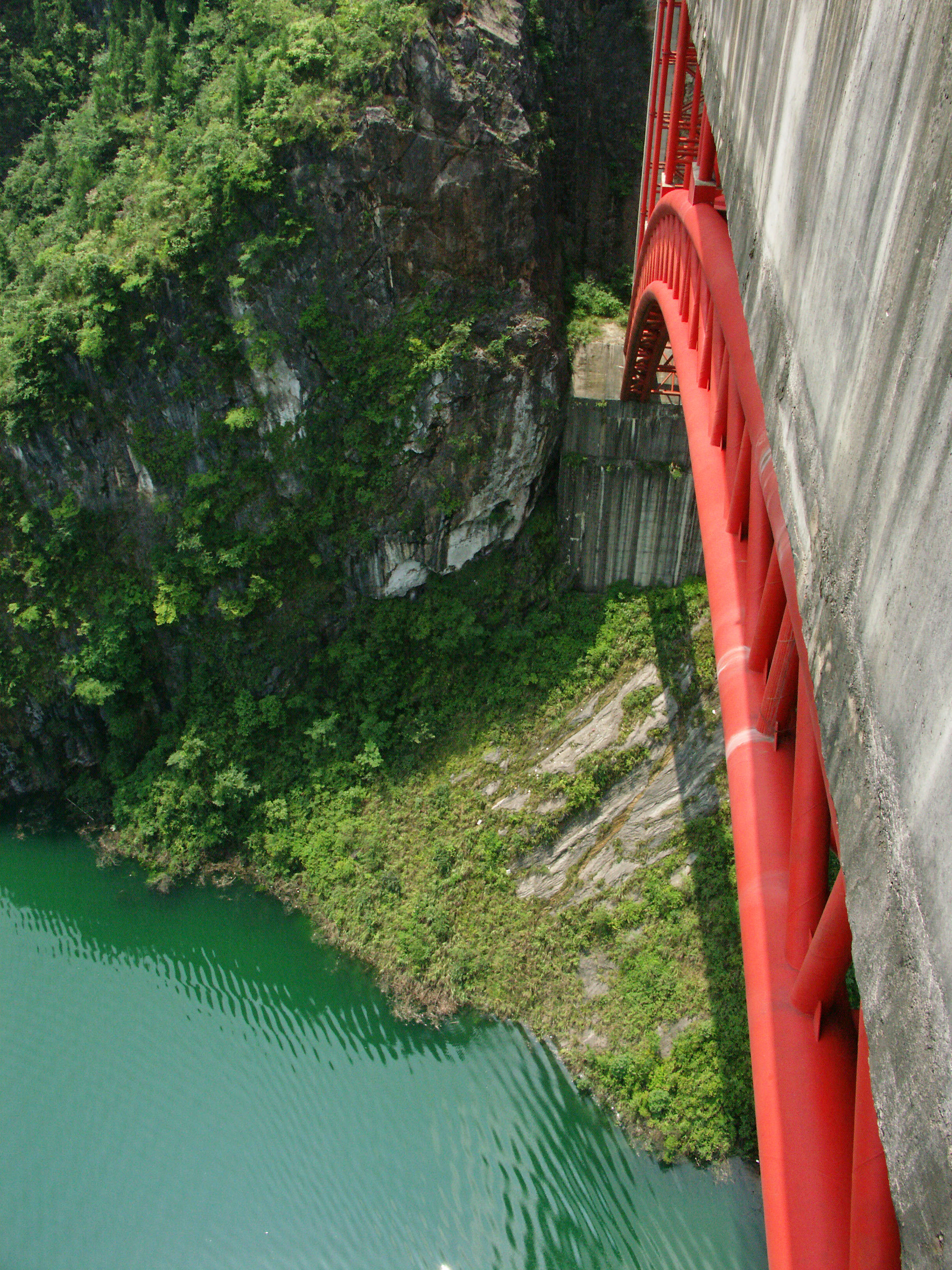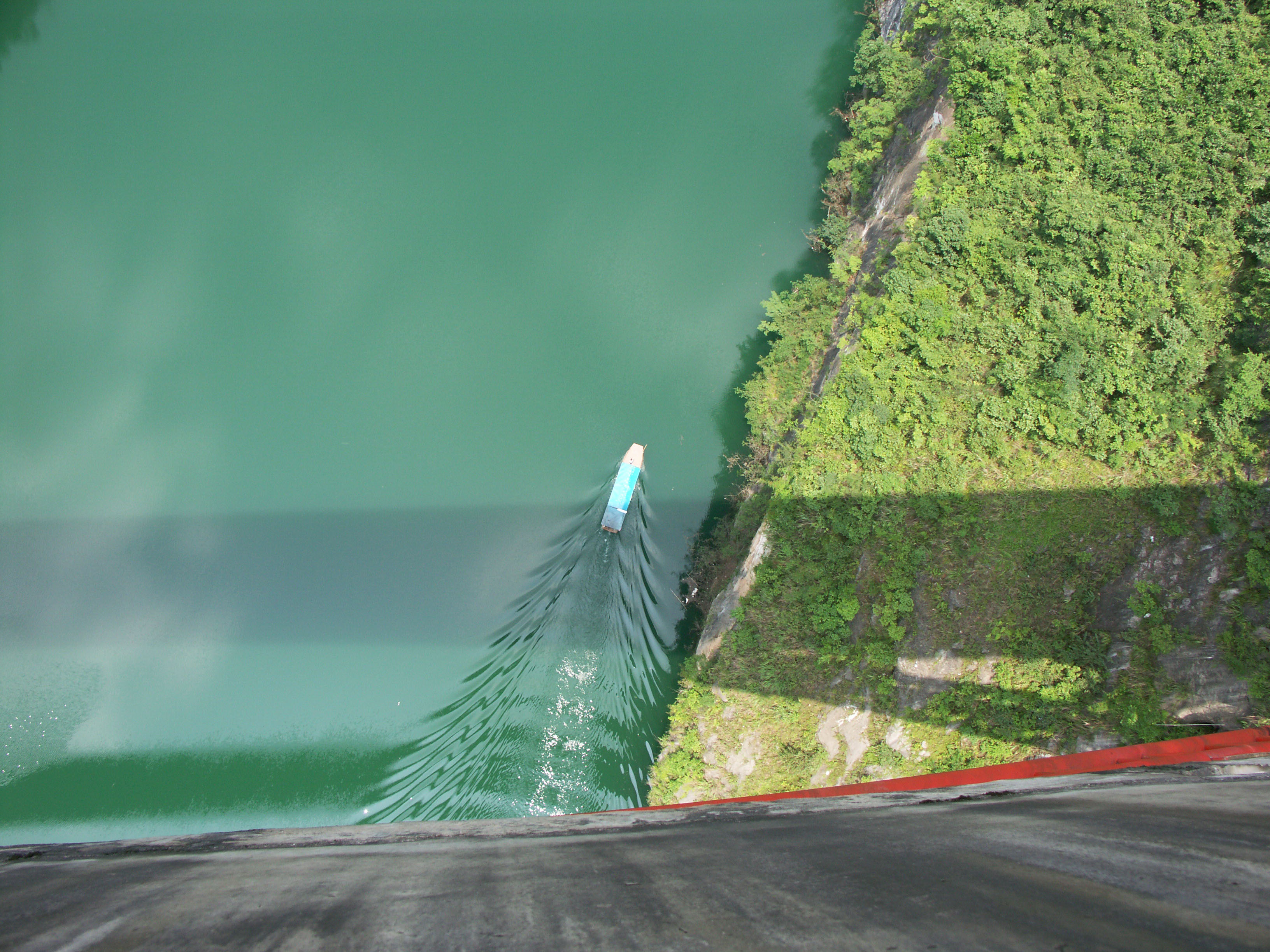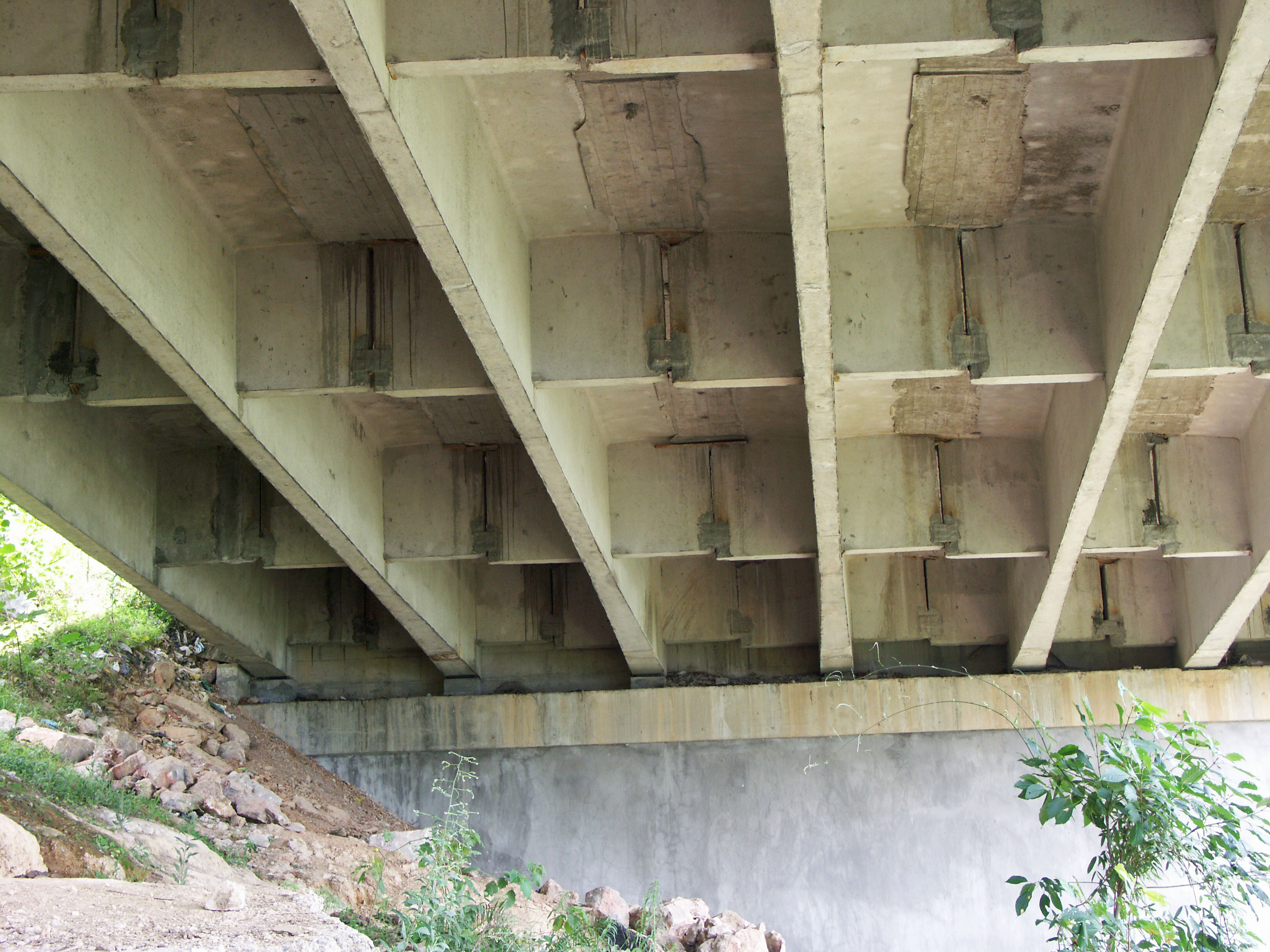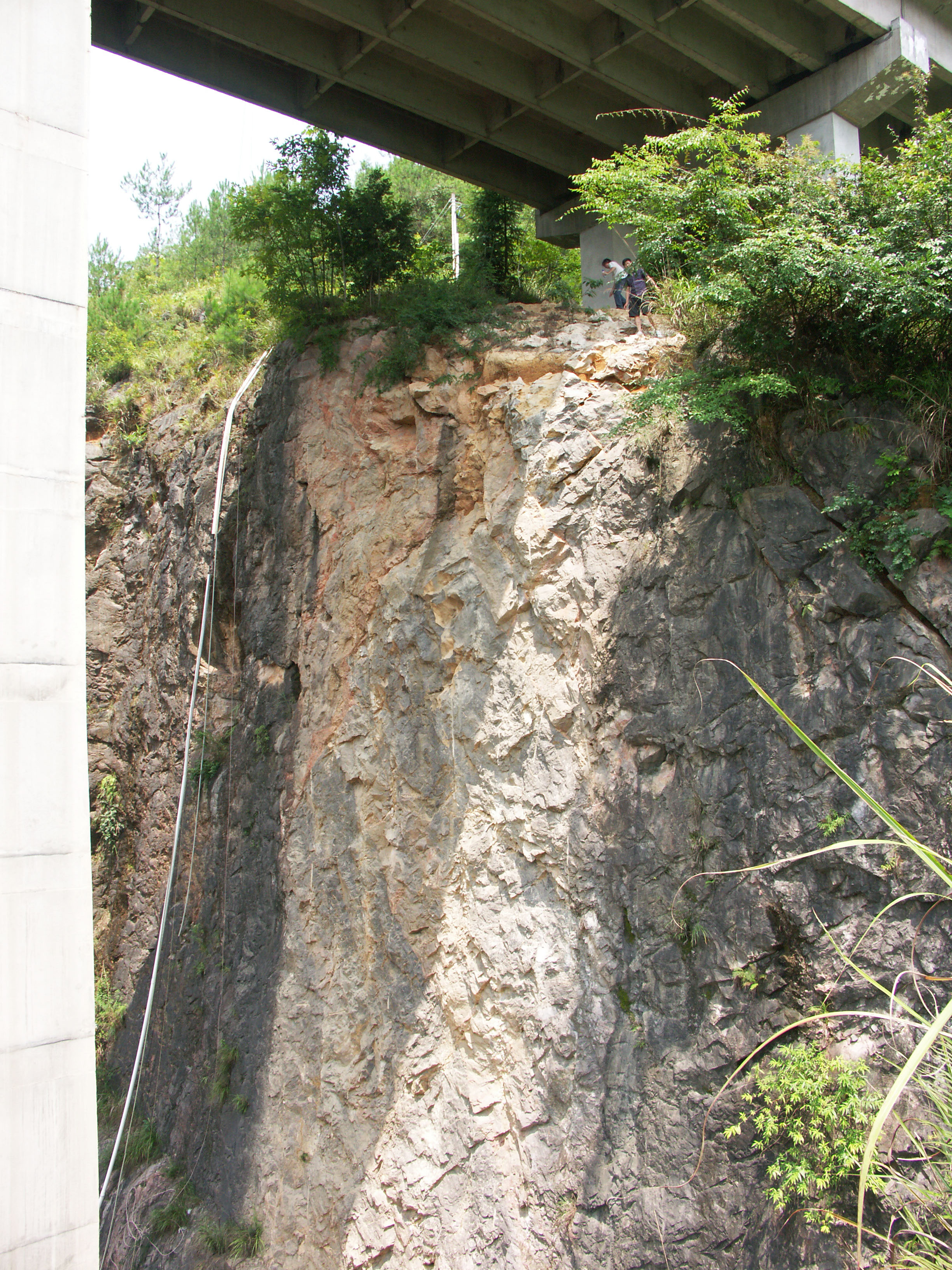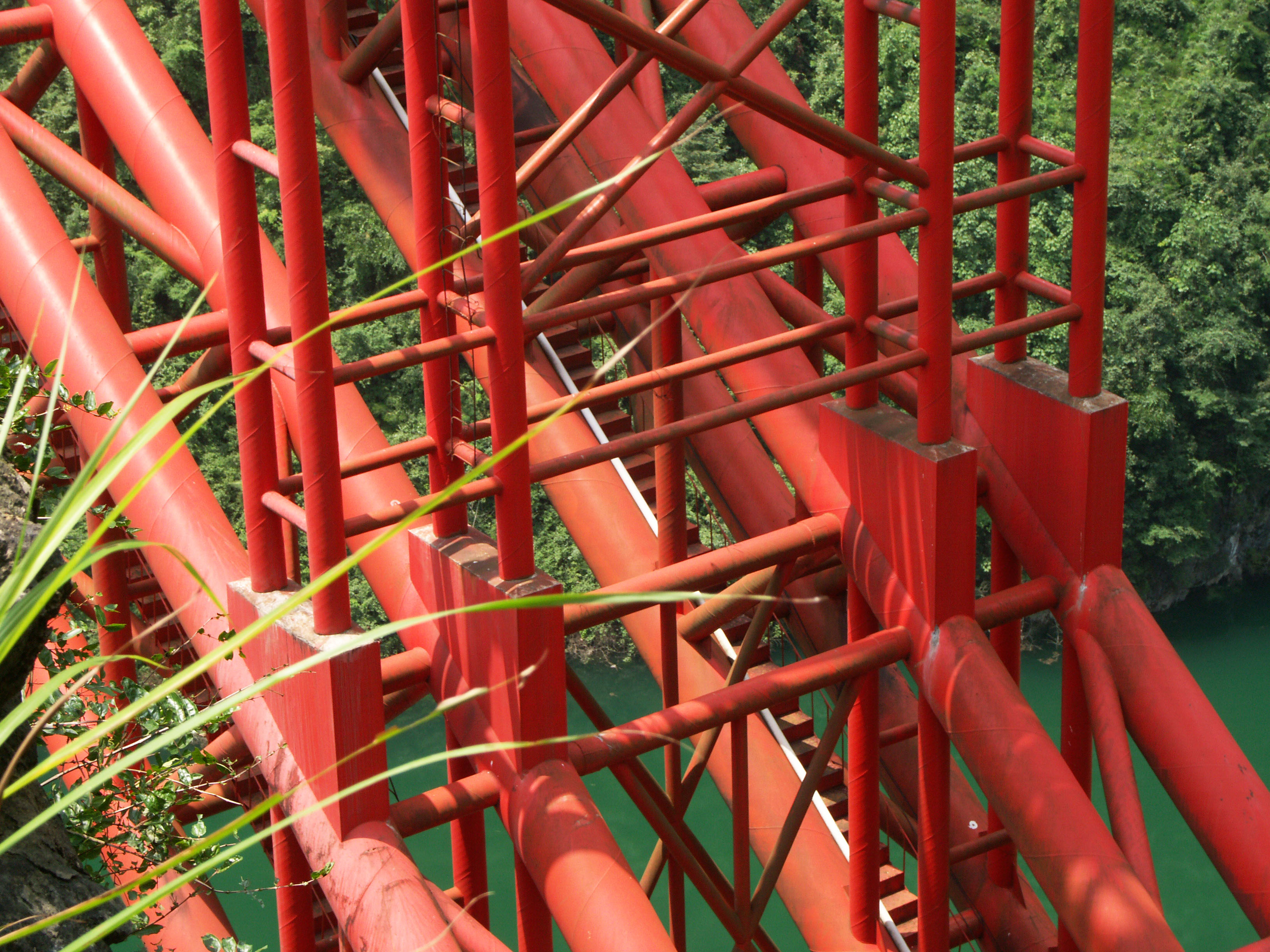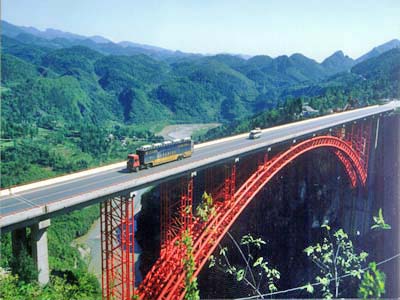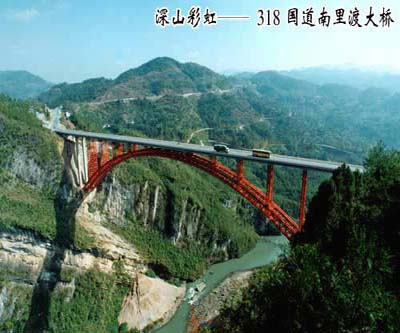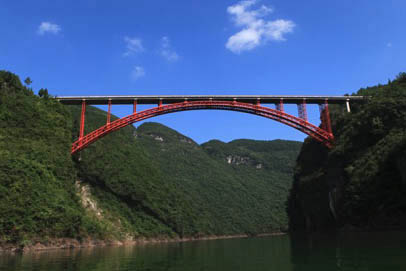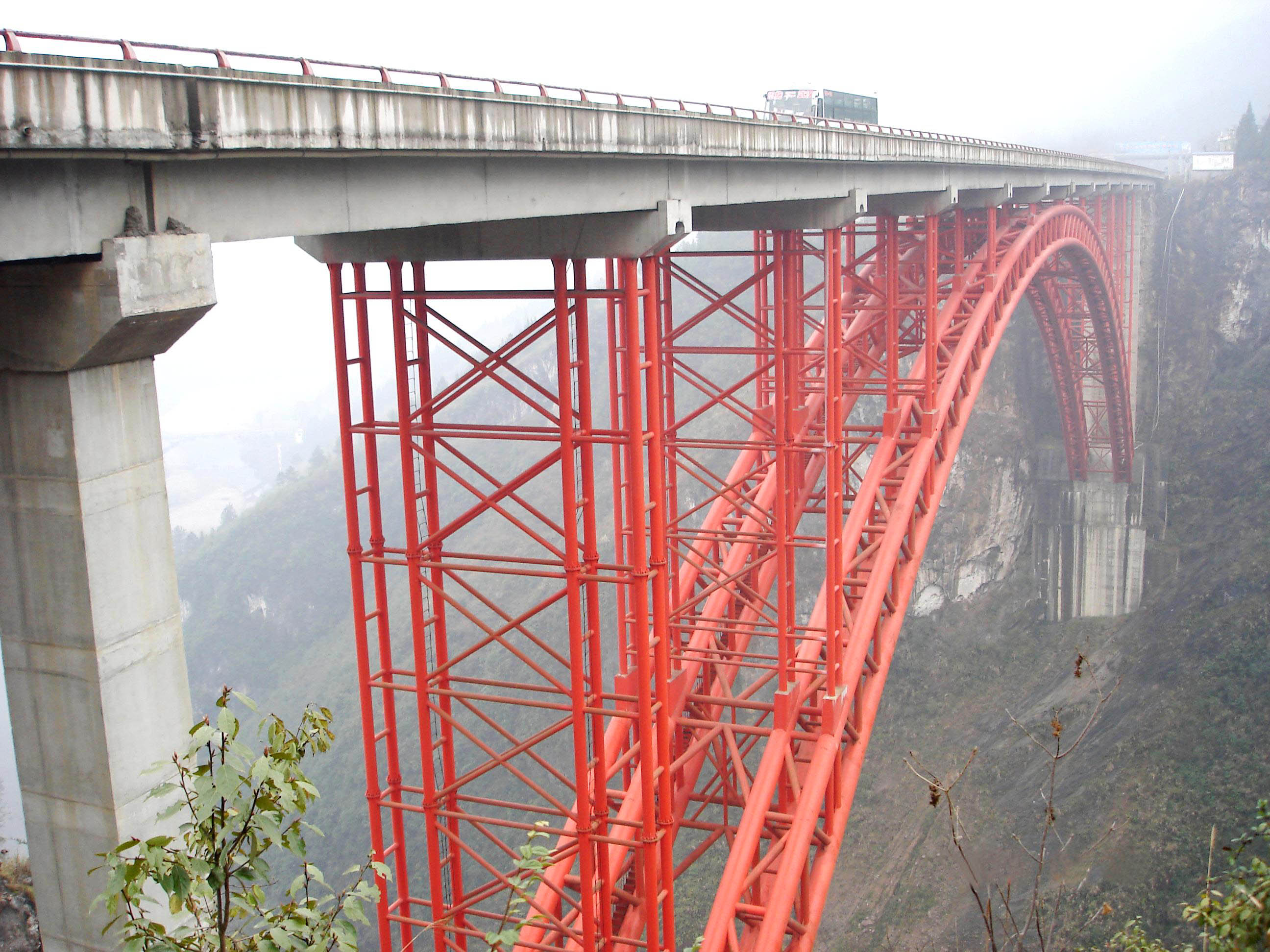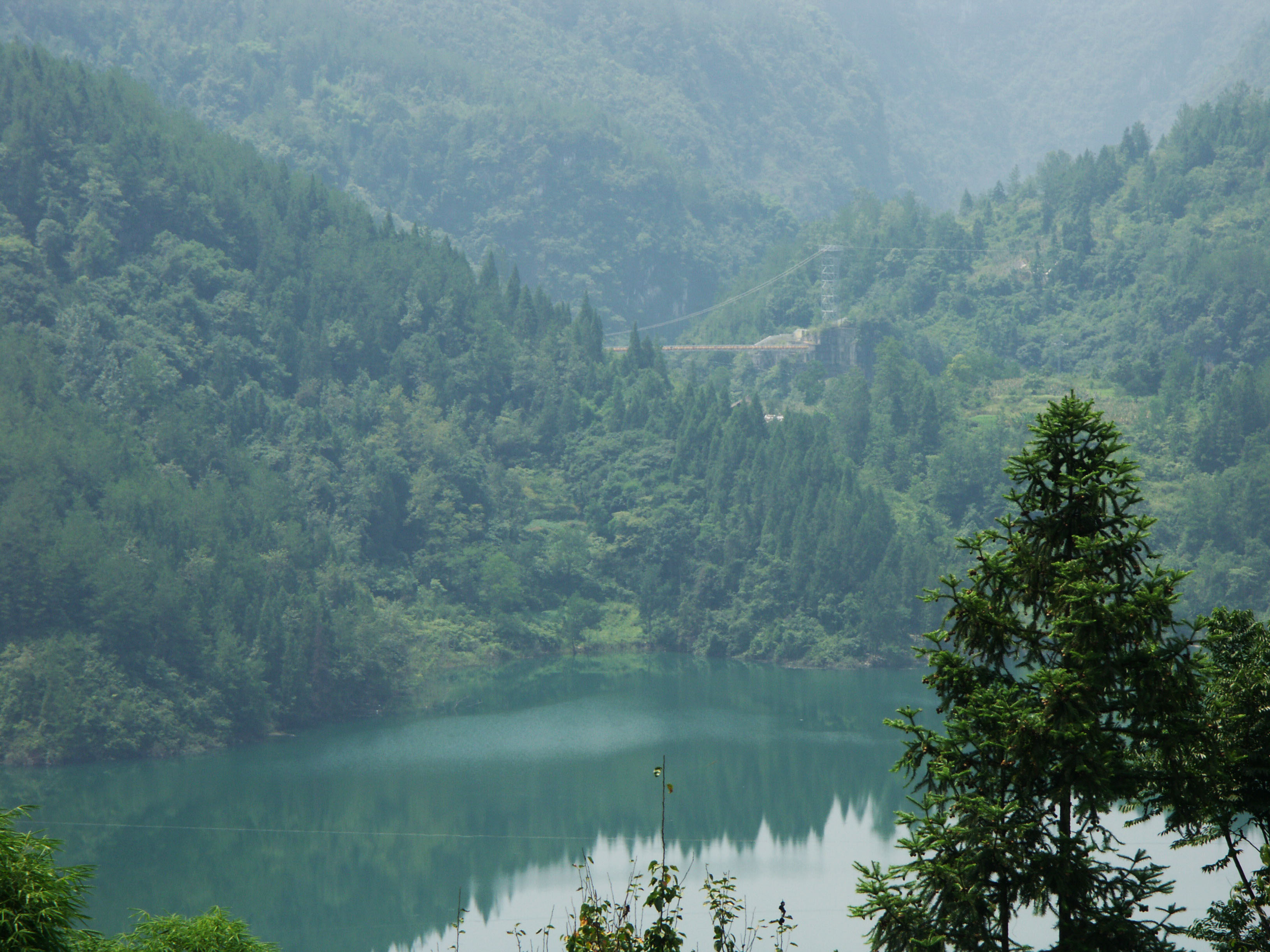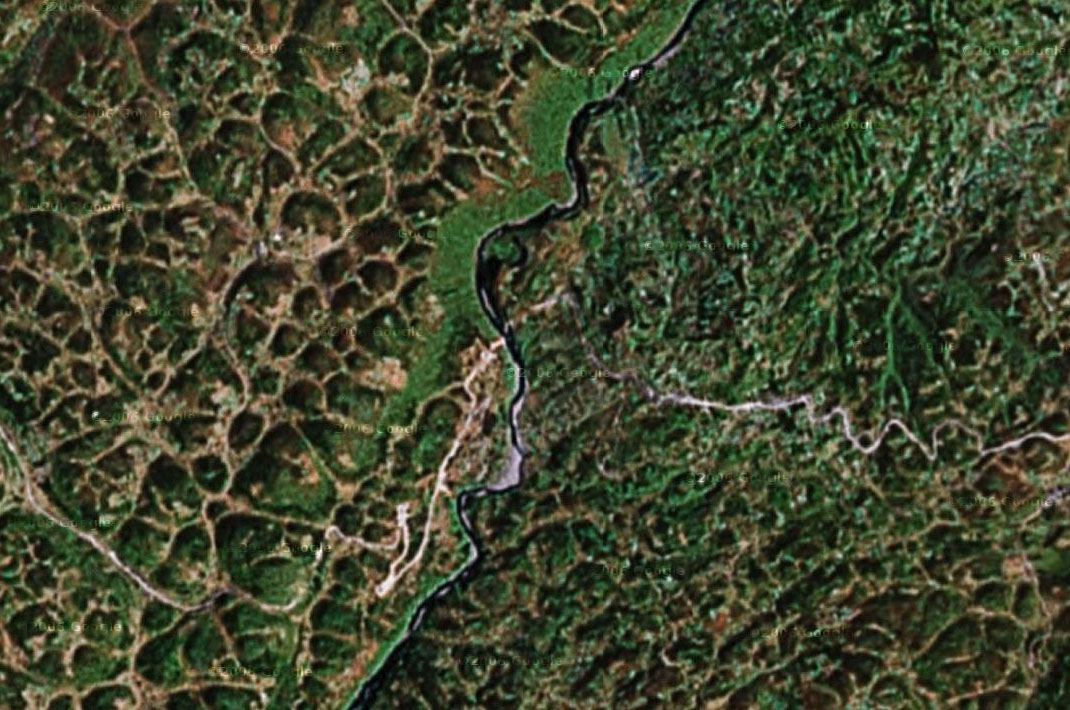Nanlidu Bridge
Nanlidu Bridge
南泥渡大桥
Baiyangpingxiang, Hubei, China
510 feet high / 155 meters high
722 foot span / 220 meter span
2002
Twisting through the rugged limestone mountains of China’s Hubei province, route 318 was once part of the only east-west road south of the 3 Gorges region of the Yangtze River. Connecting Enshi with the Yangtze River city of Wanxian, part of the 318 was bypassed in 2009 when the last segment of the G50 Huyu Expressway opened between Enshi and Zhongxian. A significant improvement to the original 2-lane road came in 2002 in the form of the beautiful Nanlidu bridge. Leaping across the river in a single bound of 220 meters / 722 feet, the brilliant red span frames a spectacular mountain backdrop. The arch has a span to rise ratio of 5:1. The bridge is 13.2 meters wide with a roadway 9 meters wide.
Another one of China’s unique concrete filled steel tube bridges, the Nanlidu bridge was built like several other high and long span steel arch bridges using the stayed cantilever method whereby a tower is erected on either side of the gorge and cables temporarily radiate out from it to support individual sections of the arch until the two halves can be joined in the middle. Once the main arch is closed at the crown, concrete is pumped into the hollow tubes of the two steel arch ribs, filling them upward from the foundations to the crown. First used by the Chinese in 1990, engineers have refined and improved the technique and now use it on the majority of their steel arch bridges. Depending on the length of the span and the width of the bridge, different styles of tubing are used. For Nanlidu, they adopted an array of single tubes spaced apart from each other. Other configurations include dumbbells with two tubes closely connected, a mix of dumbbells and single tubes such as was done on the Beipanjiang River Railway bridge or a tight cluster of tubes known as “multiple contiguous”. Once hardened, the concrete solidifies and stiffens the arch, improving the compressive strength of the entire structure.
In 2009 the Nanlidu bridge lost 43 meters / 140 feet of its height from a reservoir that began to form under it from the construction of a downstream dam.
曲折蜿蜒在中国湖北省崎岖的石灰岩山区,国道318路段曾经是长江三峡库区南岸的唯一一条东西走向的公路。连接着恩施和滨江城市万县的该国道,其中一部分将在2010年沪蓉西高速最后的恩施至万县段通车之后逐渐被淡忘。原先2车道公路的一个很重要的改进就是2002年建成的美丽的南泥渡大桥。跨越220米的河流,这座红色的大桥建在河谷山崖的陡壁之间。
作为中国独特的钢管混凝土拱桥之一,南泥渡大桥的建设也和其他的高大跨度拱桥一样,采用固定缆索悬臂施工法,这种方法首先要在河谷两侧的山坡上建立龙门塔架,之后架设临时性的索道,用来吊装架设拱圈的拼装阶段,直至两半拱圈在中间部位合拢。一旦主拱圈在拱顶位置合拢之后,起初施工时空心的钢管中,混凝土从钢管底部向上泵送至拱顶位置。20世纪90年代首先由中国工程师使用,该方法被不断的优化改进,现在中国大多数的钢管拱桥上都有使用。依据桥梁的跨度和宽度不同,不同构造的钢管形式被采用。对南泥渡大桥而言,由数根组成的一组分离的钢管形成拱圈。其他的构造形式,还有两根主管紧密相连形成的哑铃型,双哑铃式,单管形式诸如北盘江铁路桥。更多的构造形式,还有诸如紧促的钢管束(组合式钢管)。一旦混凝土硬化,就能加强拱圈,增强整个结构的整体强度。
Image by Eric Sakowski / HighestBridges.com
Image by Eric Sakowski / HighestBridges.com
Image by Eric Sakowski / HighestBridges.com
Image by Eric Sakowski / HighestBridges.com
Nanlidu Bridge construction view with temporary stays.
Nanlidu Bridge concrete filled steel tubular arch configuration.
Image by Eric Sakowski / HighestBridges.com
Image by Eric Sakowski / HighestBridges.com
Image by Eric Sakowski / HighestBridges.com
Image by Eric Sakowski / HighestBridges.com
Image by Eric Sakowski / HighestBridges.com
Image by Eric Sakowski / HighestBridges.com
Image by Eric Sakowski / HighestBridges.com
Image by Eric Sakowski / HighestBridges.com
Image by Eric Sakowski / HighestBridges.com
Image by Eric Sakowski / HighestBridges.com
Image by Eric Sakowski / HighestBridges.com
Image by Eric Sakowski / HighestBridges.com
Image by Eric Sakowski / HighestBridges.com
Image by Eric Sakowski / HighestBridges.com
Image by Eric Sakowski / HighestBridges.com
Image by Eric Sakowski / HighestBridges.com
Image by Eric Sakowski / HighestBridges.com
A view before the reservoir formed beneath the arch.
A reservoir began to form beneath the bridge in 2009.
The original arch bridge crossing can faintly be seen on the left side before it was removed for the reservoir.
A pipeline suspension bridge crosses the Mashui River just south of the arch. Before the reservoir was completed, the pipeline was around 90 meters above the river. Image by Eric Sakowski / HighestBridges.com
Image by Eric Sakowski / HighestBridges.com
Nanlidu Bridge wide satellite image.
Nanlidu Bridge satellite image showing the new crossing at the top and the older crossing to the south that is now under a deep reservoir. The pipeline bridge is just out of view further south.

